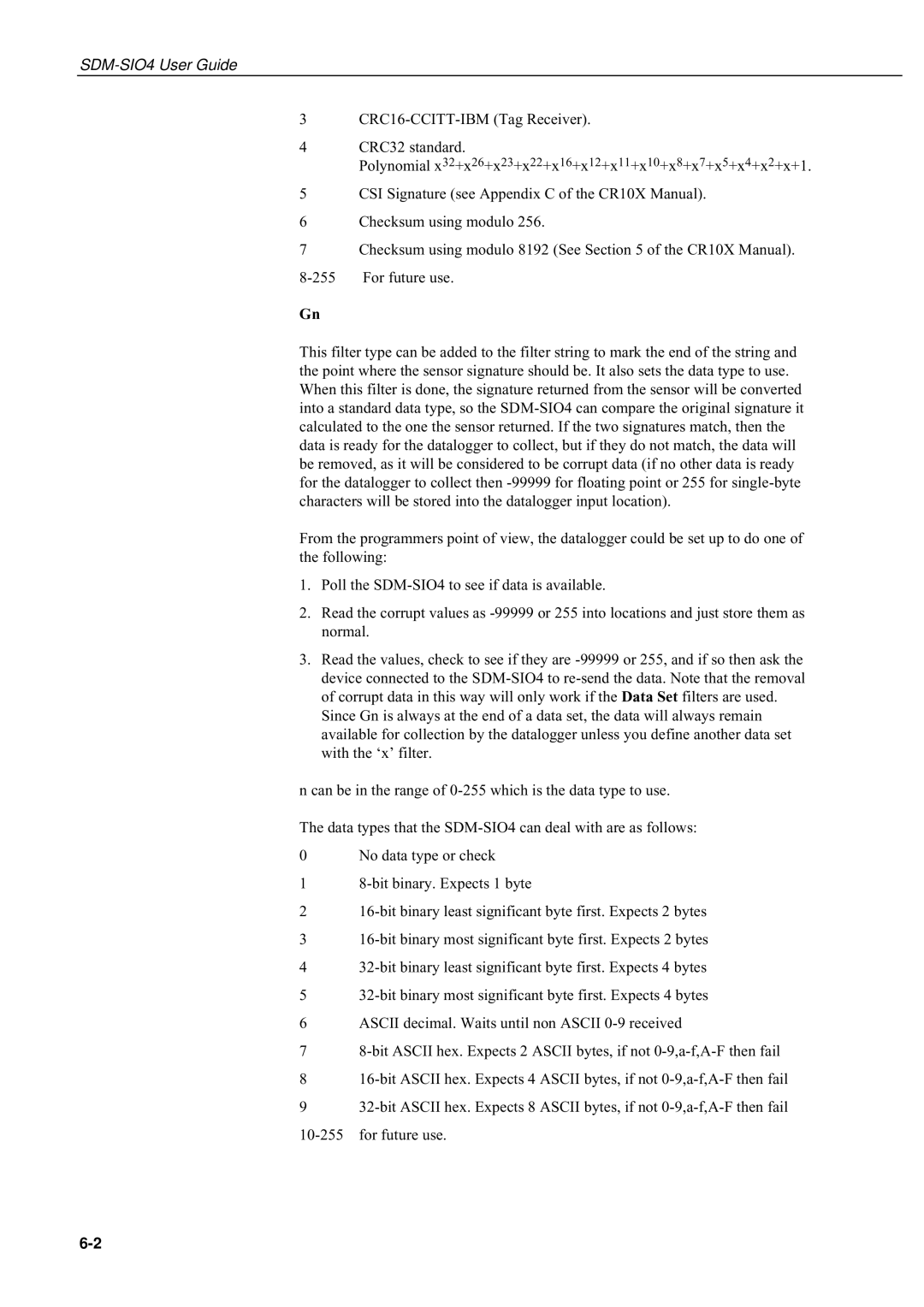3CRC16-CCITT-IBM (Tag Receiver).
4CRC32 standard.
Polynomial x32+x26+x23+x22+x16+x12+x11+x10+x8+x7+x5+x4+x2+x+1.
5CSI Signature (see Appendix C of the CR10X Manual).
6Checksum using modulo 256.
7Checksum using modulo 8192 (See Section 5 of the CR10X Manual).
8-255 For future use.
Gn
This filter type can be added to the filter string to mark the end of the string and the point where the sensor signature should be. It also sets the data type to use. When this filter is done, the signature returned from the sensor will be converted into a standard data type, so the SDM-SIO4 can compare the original signature it calculated to the one the sensor returned. If the two signatures match, then the data is ready for the datalogger to collect, but if they do not match, the data will be removed, as it will be considered to be corrupt data (if no other data is ready for the datalogger to collect then -99999 for floating point or 255 for single-byte characters will be stored into the datalogger input location).
From the programmers point of view, the datalogger could be set up to do one of the following:
1.Poll the SDM-SIO4 to see if data is available.
2.Read the corrupt values as -99999 or 255 into locations and just store them as normal.
3.Read the values, check to see if they are -99999 or 255, and if so then ask the device connected to the SDM-SIO4 to re-send the data. Note that the removal of corrupt data in this way will only work if the Data Set filters are used.
Since Gn is always at the end of a data set, the data will always remain available for collection by the datalogger unless you define another data set with the ‘x’ filter.
n can be in the range of 0-255 which is the data type to use.
The data types that the SDM-SIO4 can deal with are as follows:
0No data type or check
18-bit binary. Expects 1 byte
216-bit binary least significant byte first. Expects 2 bytes
316-bit binary most significant byte first. Expects 2 bytes
432-bit binary least significant byte first. Expects 4 bytes
532-bit binary most significant byte first. Expects 4 bytes
6ASCII decimal. Waits until non ASCII 0-9 received
78-bit ASCII hex. Expects 2 ASCII bytes, if not 0-9,a-f,A-F then fail
816-bit ASCII hex. Expects 4 ASCII bytes, if not 0-9,a-f,A-F then fail
932-bit ASCII hex. Expects 8 ASCII bytes, if not 0-9,a-f,A-F then fail 10-255 for future use.
